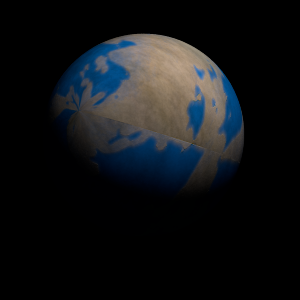|
|
Space Astro
|
Info for exoplanet "Araqo Has"
| Scientific (actual) data |
|---|
| Name | Kepler-489 b |
| Planet status | Confirmed |
| Radius | 0.689 |
| Orbital period | 17.2763 |
| Discovered | 2016 |
| Updated | 2021-02-05 |
| Tconj | 2454970 |
| Publication | Announced on a website |
| Detection type | Primary Transit |
| Alternate names | 2MASS J19231995+3811036 b, K00197.01, KIC 2987027 b, KOI-197 b, KOI-197.01, WISE J192319.97+381103.2 b |
| Star name | Kepler-489 |
| Right ascension | 290.83° |
| Declination | 38.18° |
| Mag j | 12.536 |
| Mag h | 12.058 |
| Mag k | 11.959 |
| Star distance | 379 |
| Star metallicity | 0 |
| Star mass | 0.82 |
| Star radius | 0.76 |
| Star age | 3.31 |
| Star temperature | 5014 |
| Star alternate names | 2MASS J19231995+3811036, KIC 2987027, KOI-197, WISE J192319.97+381103.2 |
| Wikipedia article | Kepler-489 b |
Back
| |
| Fictional info (?) |
|---|
| Suggested name | Araqo Has |
| Planet type | Cold planet |
|
| Atmosphere | Ethane | 78% |
| Ammonia | 17% |
| Formaldehyde | 2.3% |
| Nitrogen | 2.1% |
| Oxygen | 0.019% |
| Hydrogen chloride | 0.003% |
| Atmospheric pressure | 2.4 bar |
 |
| No known satellites |
| Google search for Araqo has |
|
Website by Joachim Michaelis
|
|
|
|